Though one of the largest metropolitan areas, Phoenix is also a great hiking city, home to mountain and desert preserves, with over 200 miles of hiking and biking trails, and about 40 access points of protected wilderness within the city limits. From easy strolls through tall saguaros and riparian areas, to strenuous climbs up steep mountain slopes, to interpretive trails in the Desert Botanical Garden, you’ll find a place to enjoy the outdoors. Here are some of the best places to experience nature and the unique desert environment of Phoenix.
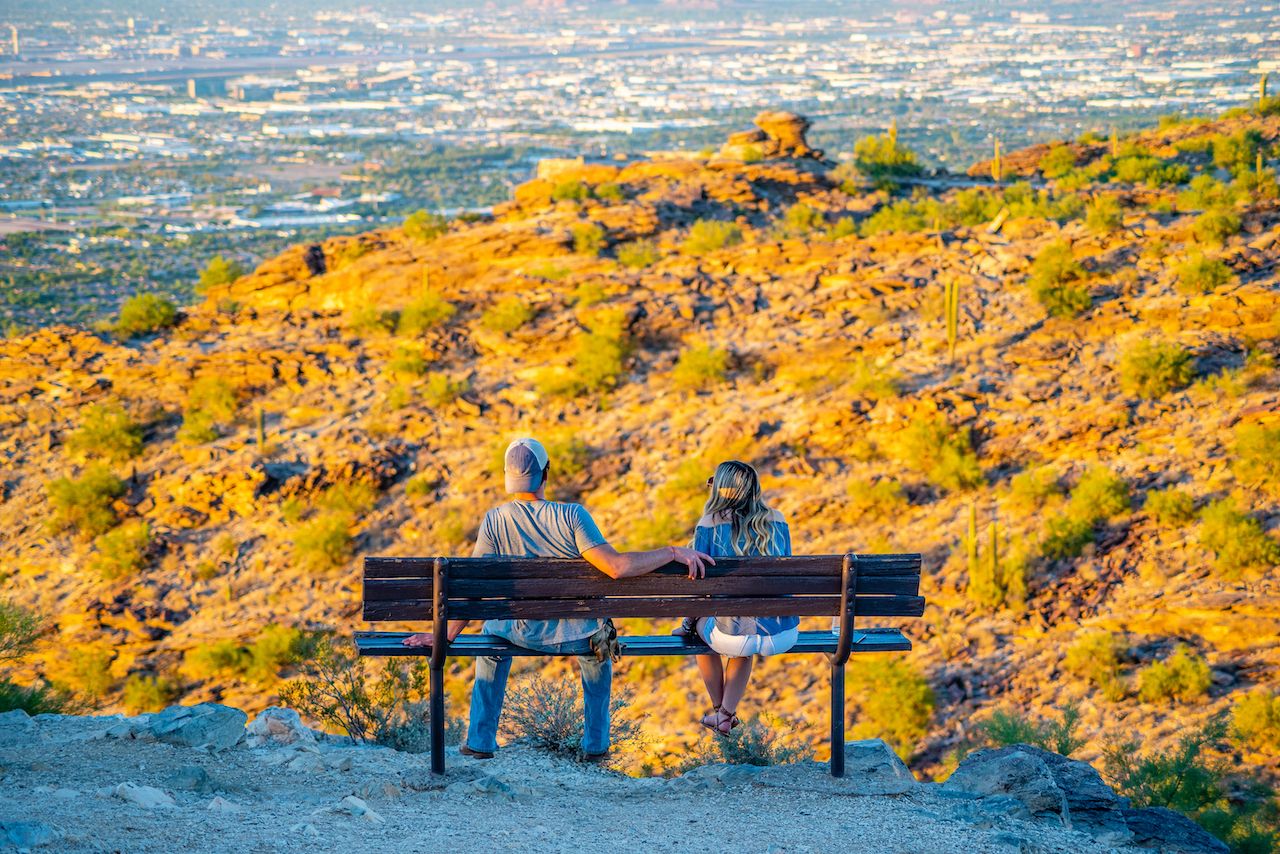
Photo: Gregory E. Clifford/Shutterstock
South Mountain Park — Offering hiking, mountain biking, and horseback riding opportunities on 51 miles of trails, South Mountain Park/Preserve is the largest wilderness area within city limits in the US, stretching over 17,000 acres of unspoiled desert. A scenic drive leads to the top of the mountain with stops for trailheads and a great viewpoint of the surrounding city below.
The South Mountain Environmental Education Center offers a great introduction to the desert environment of the park, where interpretive indoor exhibits follow the history of South Mountain Park. At the center, “adventure packs” are available, specifically geared to help you explore nearby trails and learn about things such as local birds, insects, and flora.
Inside the park, different trailheads are starting points for hikes of all lengths and levels, from short one-mile walks to strenuous 10-mile treks, some of them offering views of ancient petroglyphs left behind by the Hohokam who lived here thousands of years ago. Or, for a true Western experience, guests can take a horseback ride through the park.
Photo: Gregory E. Clifford/Shutterstock
Papago Park — Showcasing the red buttes of Papago Park, especially the Hole-in-the-Rock, Papago Park is the most recognizable image in Phoenix. The smooth trails, with little or no elevation gain, offer an easy way for outdoor enthusiasts of any fitness level to enjoy the desert environment. Some trails include interpretive signs that teach about the desert flora and fauna, and the short hike inside the Hole-in-the-Wall offers some of the best views of the surrounding area. Home to the Papago Golf Course and Papago Park Lagoons, the park offers opportunities for any outdoor activity, even fishing in the desert.
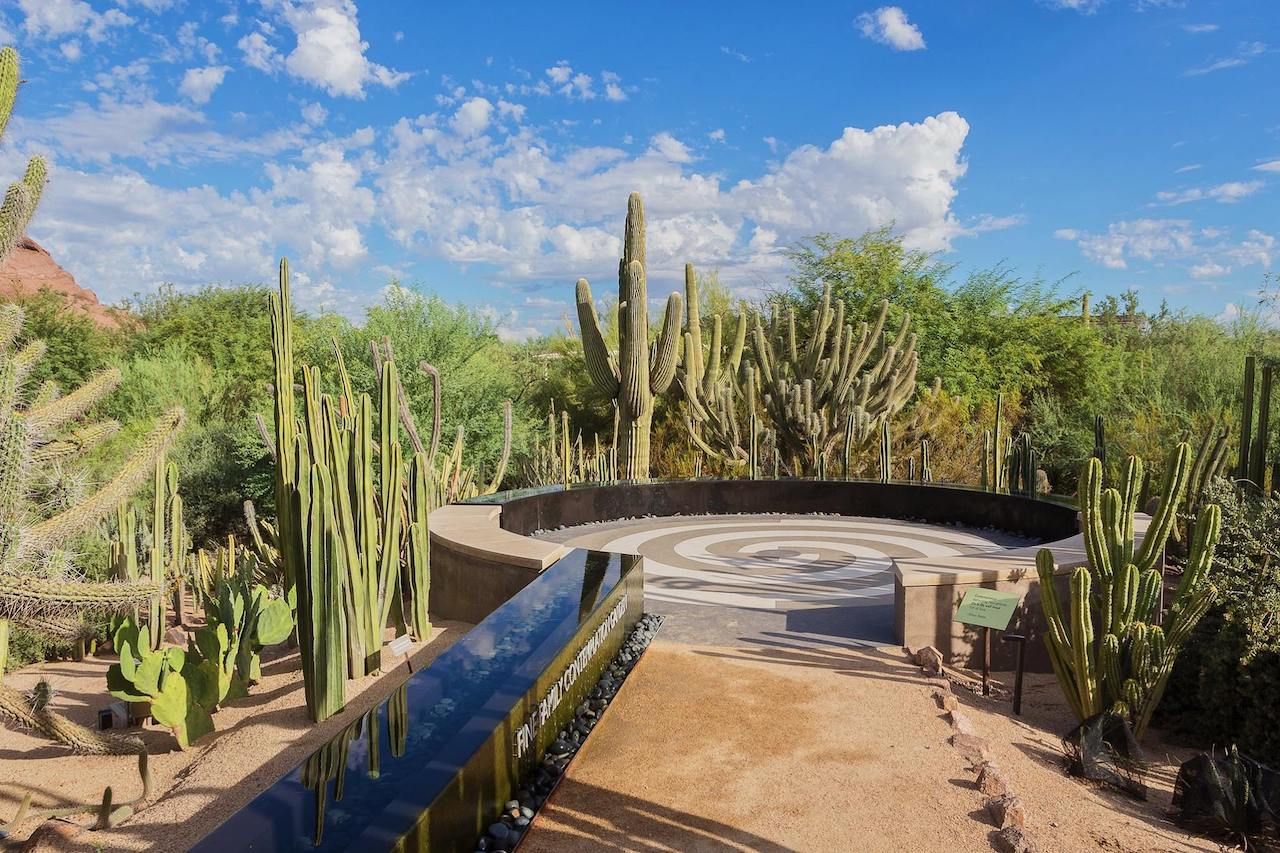
Photo: Desert Botanical Garden/Facebook
Desert Botanical Garden — Sitting across from Papago Park, and next to the Phoenix Zoo, the Desert Botanical Garden showcases the flora and fauna of the hottest parts of the world. Though some trails teach about the desert environments from around the world, most of them concentrate on the Sonoran Desert. In the spring, the Desert Wildflower Trail is bursting with color, displaying also a butterfly and hummingbird garden. By hiking uphill on the Sonoran Desert Loop Trail guests can get a slight workout, and on the Plants and People of the Sonoran Desert Trail they’ll gain insight into the lives of the people who called this desert home for thousands of years.

Photo: Globe Guide Media Inc/Shutterstock
Camelback Mountain — Resembling a camel’s back, and sitting in the center of Phoenix, Camelback Mountain is visible from all areas of downtown. As one of the top hiking destinations in the country, it attracts outdoor enthusiasts from around the world. There’s a choice of two trailheads — the Cholla and Echo Canyon, both of which are difficult — to ascend the 2,704-foot-high summit. The steep elevation gain, rugged terrain, and harsh elements of the desert make the climb dangerous, but those who reach the top are rewarded by a great view of the city below.
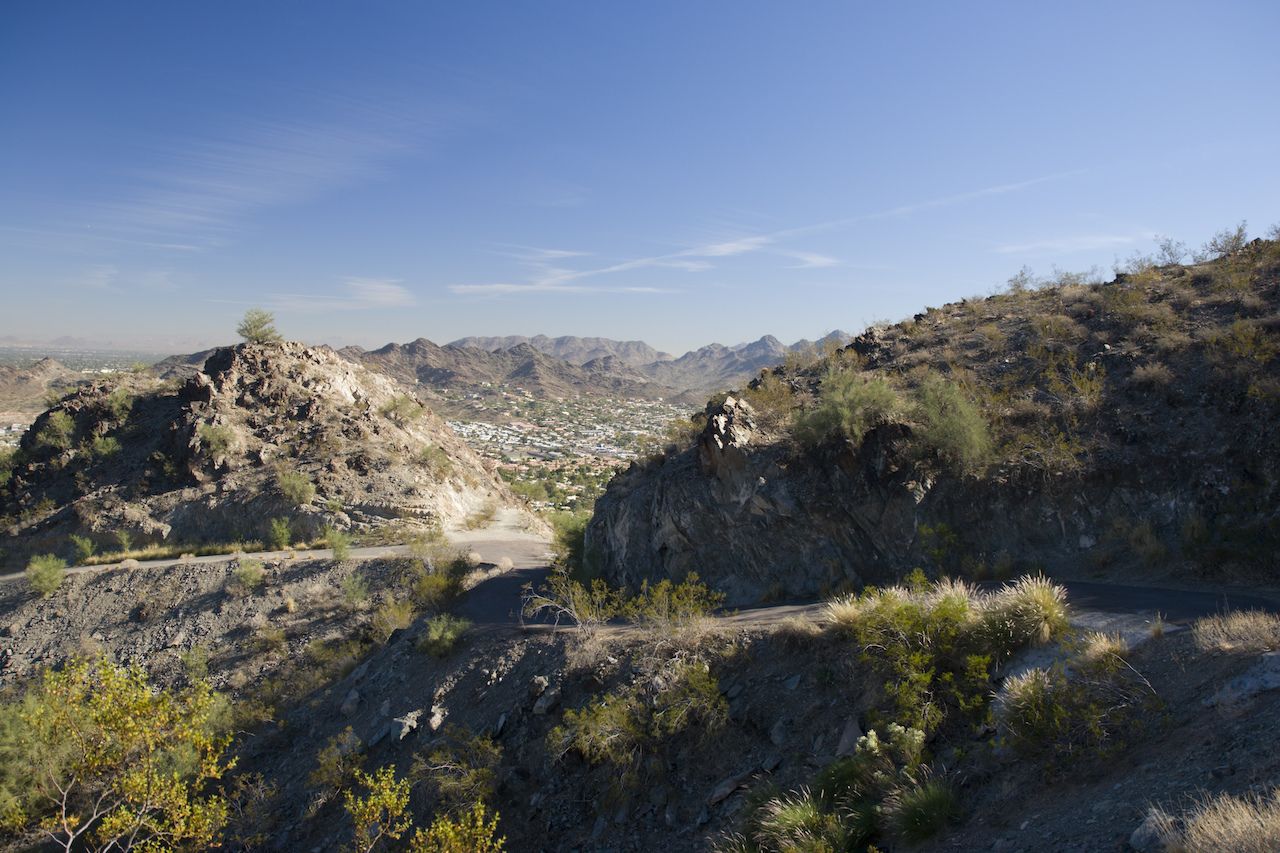
Photo: You Touch Pix of EuToch/Shutterstock
North Mountain Preserve — Offering access to both North Mountain and Shaw Butte, peaks dominating the north Phoenix skyline at over 2,100 feet, the North Mountain Preserve features over 20 miles of hiking, biking, and horseback riding trails. The Visitor Center offers a great introduction to the flora, fauna, geology, history, and archaeology of the area. After stopping there, visitors can hike a trail leading through ancient Hohokam petroglyphs and a rich desert ecosystem, including saguaros, palo verde and mesquite trees, and creosote bushes. In early spring, they can enjoy a burst of colors during the hike, since North Mountain is one of the best places for wildflower viewing in and around the city.
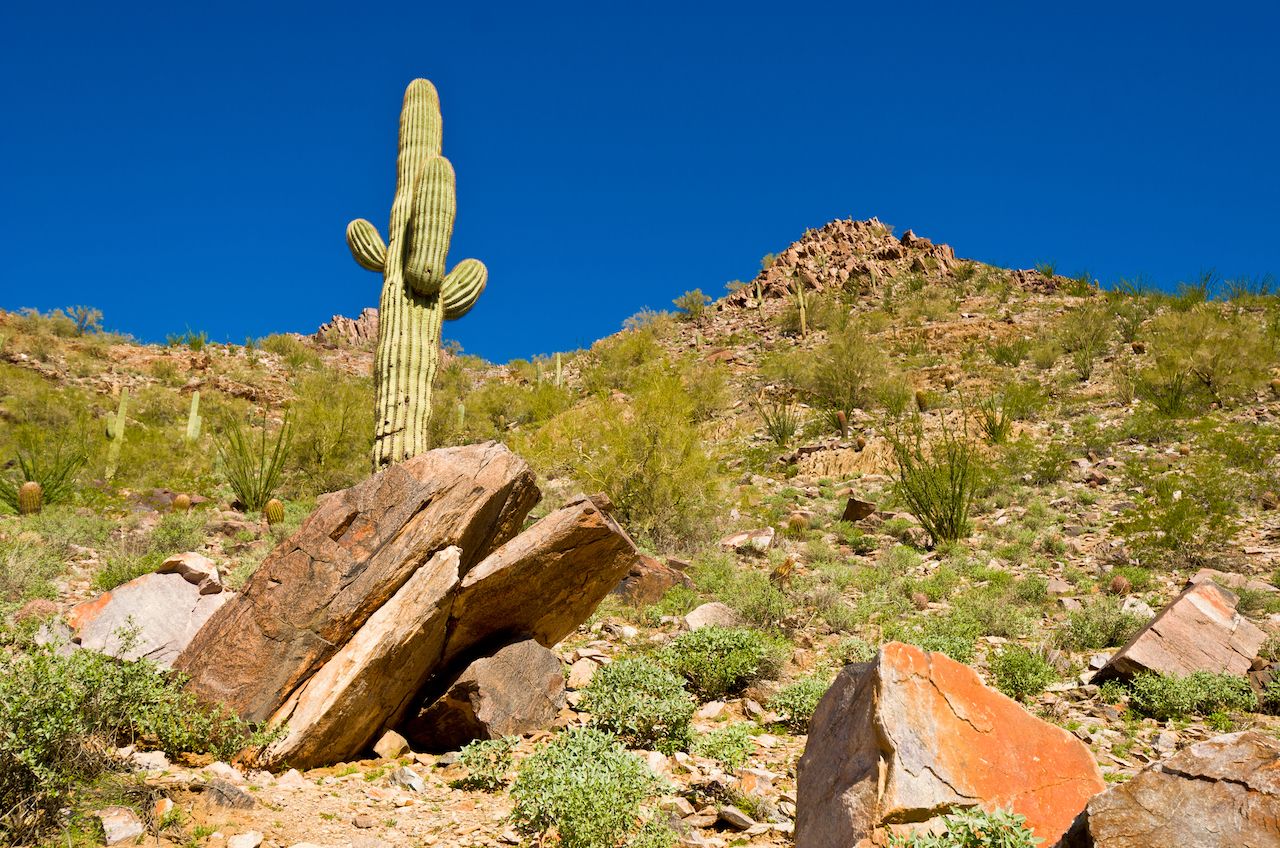
Photo: Scruggelgreen/Shutterstock
Dreamy Draw Recreation Area — Home to Piestewa Peak, the second highest peak in the city at 2,608 feet, Dreamy Draw Recreation Area offers desert trails for hikers of all abilities, with easy access from the I-51 Highway. For a strenuous hike, the Summit Trail climbs to the top of Piestewa Peak and rewards the hardy climber with a panoramic city vista. Those who prefer easier walks have a few choices of flat trails leading into secluded valleys where they may feel miles away from the noise of the city.

Photo: Deer Valley Petroglyph Preserve/Facebook
Deer Valley Petroglyph Preserve — Home to the largest concentration of Native American petroglyphs in Phoenix, the Deer Valley Petroglyph Preserve in northwest Phoenix is an archaeology museum on a 47-acre desert preserve. Little known even by locals, the preserve gives visitors a chance to be alone among petroglyphs, some of them 7,000 years old. The exhibits in the indoor museum offer a better understanding of the ancient people who lived or traveled through the area, including the Hohokam and Patayan. On the trail, beside the petroglyphs, visitors may encounter desert wildlife while enjoying the unique landscape.
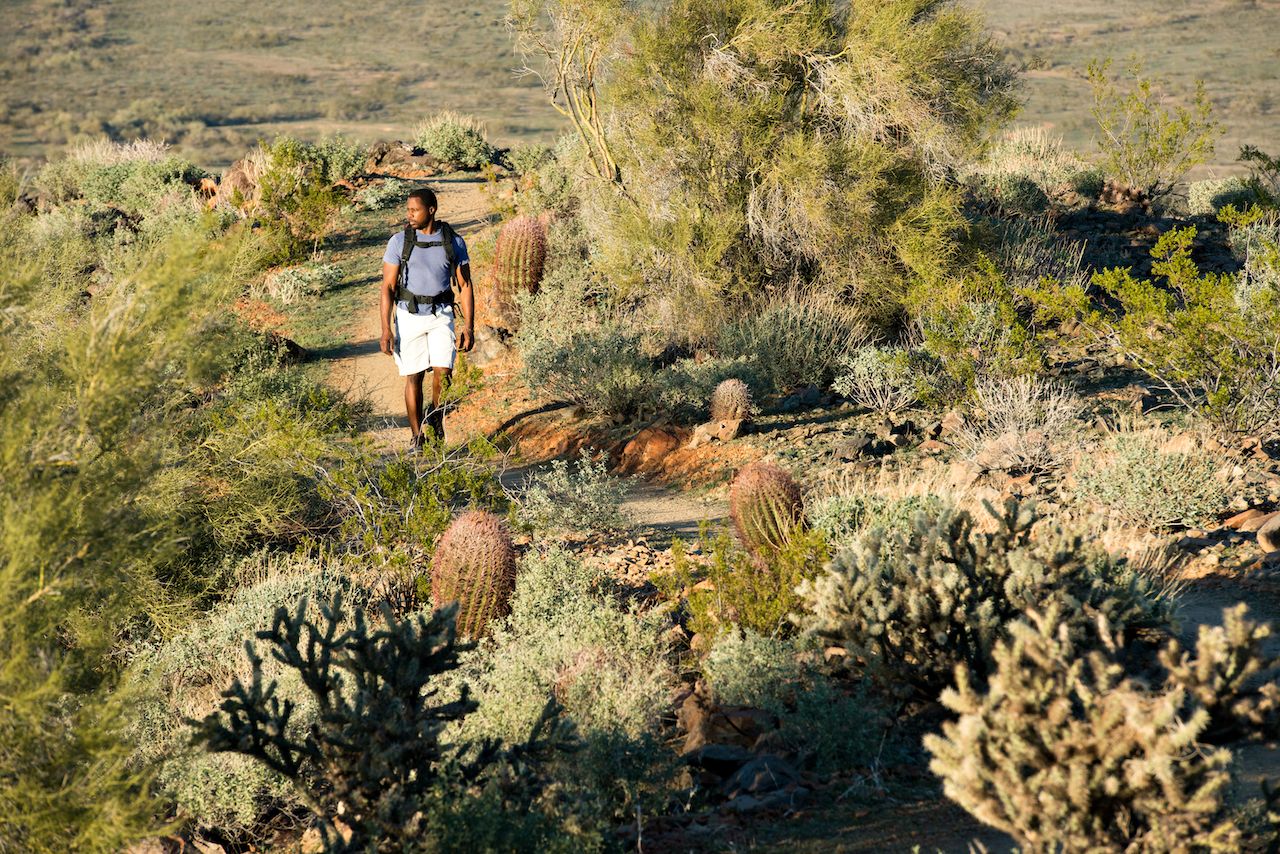
Photo: Mark Skalny/Shutterstock
Sonoran Desert Preserve — Showcasing some of the most beautiful desert vistas on the far northeast side of Phoenix, the Sonoran Desert Preserve offers about 36 miles of trails through its 18,000 acres. With three access points and trailheads — the Apache Wash, Desert Vista, and Desert Hills — hikers, bikers, and horseback riders can enjoy unspoiled desert landscape, feeling hundreds of miles away from the city. Giant saguaros, fuzzy teddy bear chollas, and creosote bushes dot the landscape of this lush part of the desert.
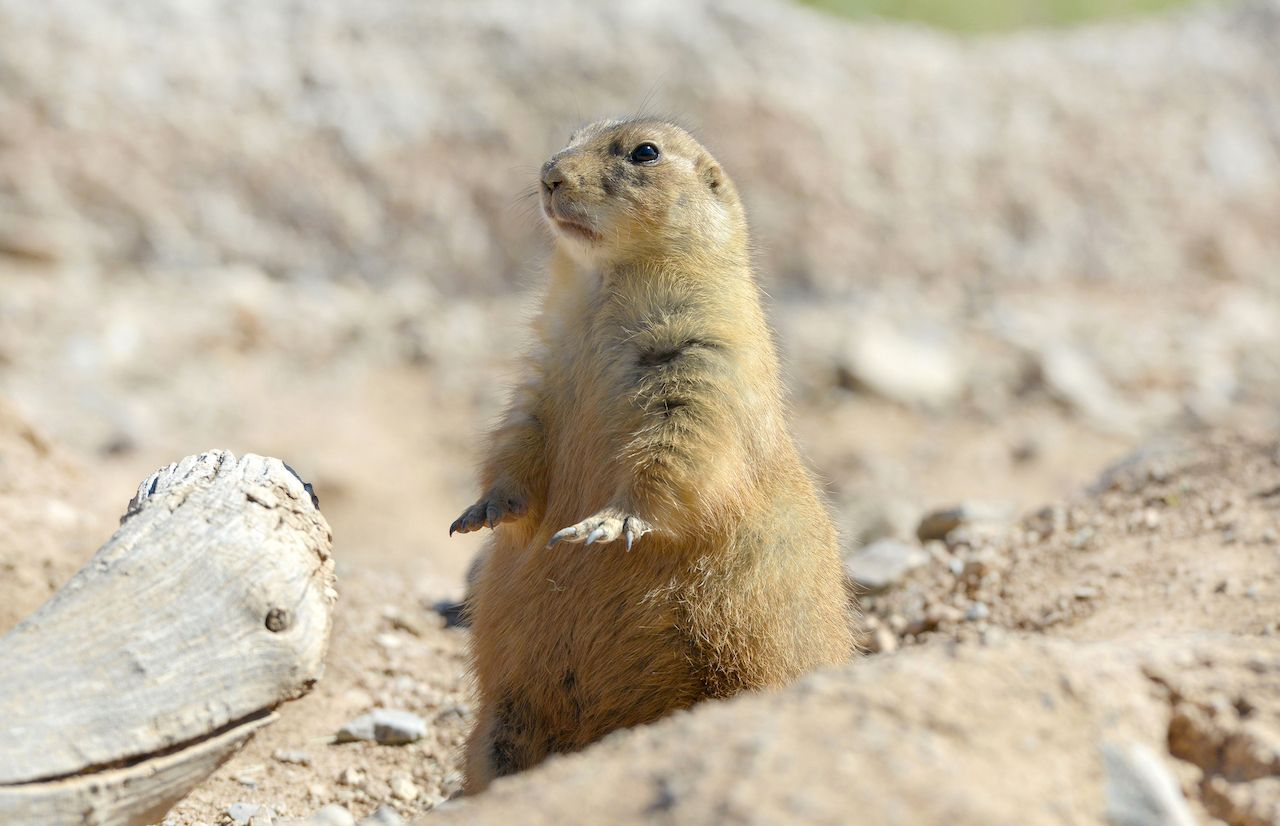
Photo: worldswildlifewonders/Shutterstock
Reach 11 Recreational Area — Home to a unique desert wash environment around a small pond in north Phoenix, Reach 11 incorporates about 18 miles of trails on flat terrain. Desert wildlife abounds, including a few duck families living around the pond, visited by red cardinals, while prairie dogs and rabbits run in and out from the holes around this small patch of desert. Hikers might encounter coyotes, big horned owls, hawks, hummingbirds, or an occasional badger. If you sit long enough at dusk at a viewing area set up for the purpose, you might even catch a glimpse of a rare burrowing owl.
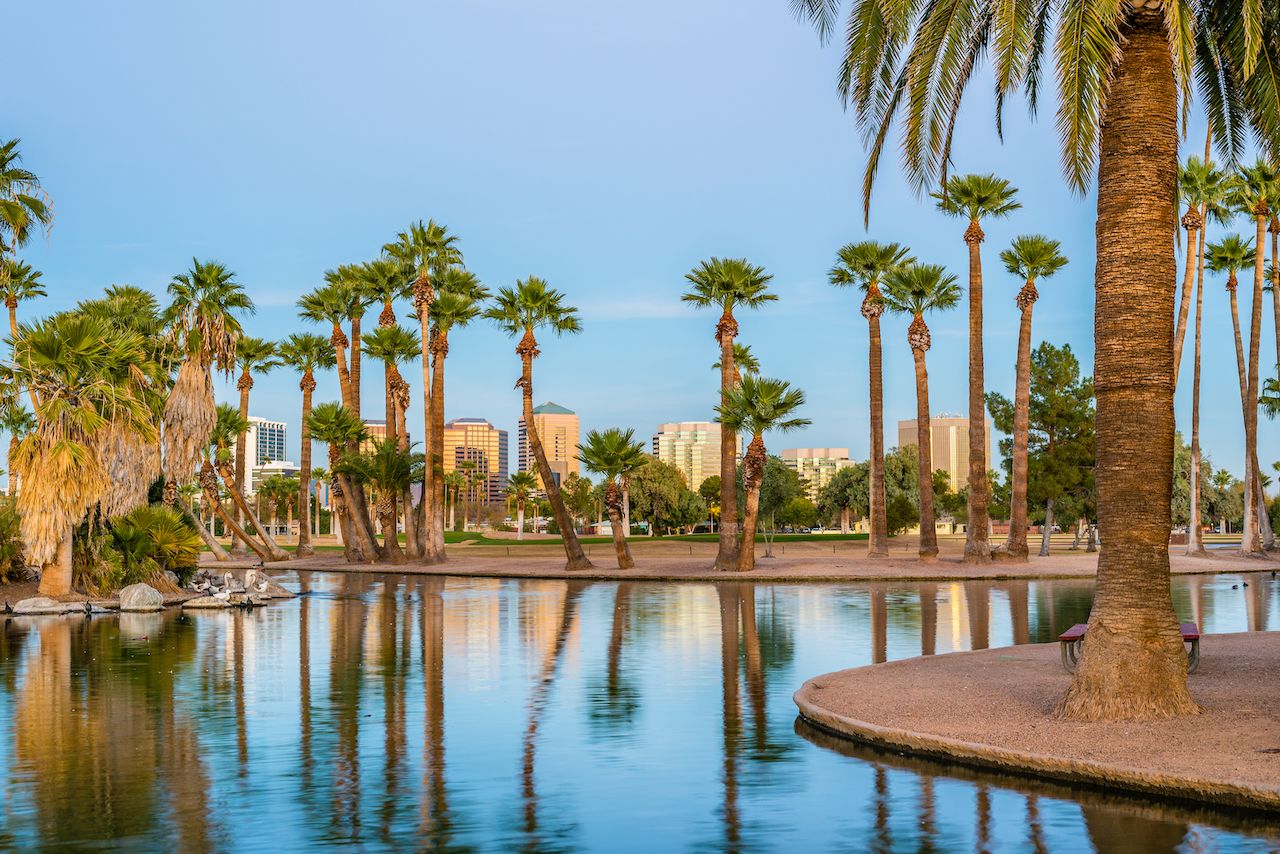
Photo: Gregory E. Clifford/Shutterstock
Encanto Park — Featuring a fishing lagoon, a sports complex with a swimming pool, nature trails, and golf courses, Encanto Park is one of the best city parks in the state. Popular among locals, especially families with kids, the park’s main attraction is the Enchanted Island Amusement Park, which offers a train ride, carousel, roller coasters, rock climbing, splash zone, and other activities.
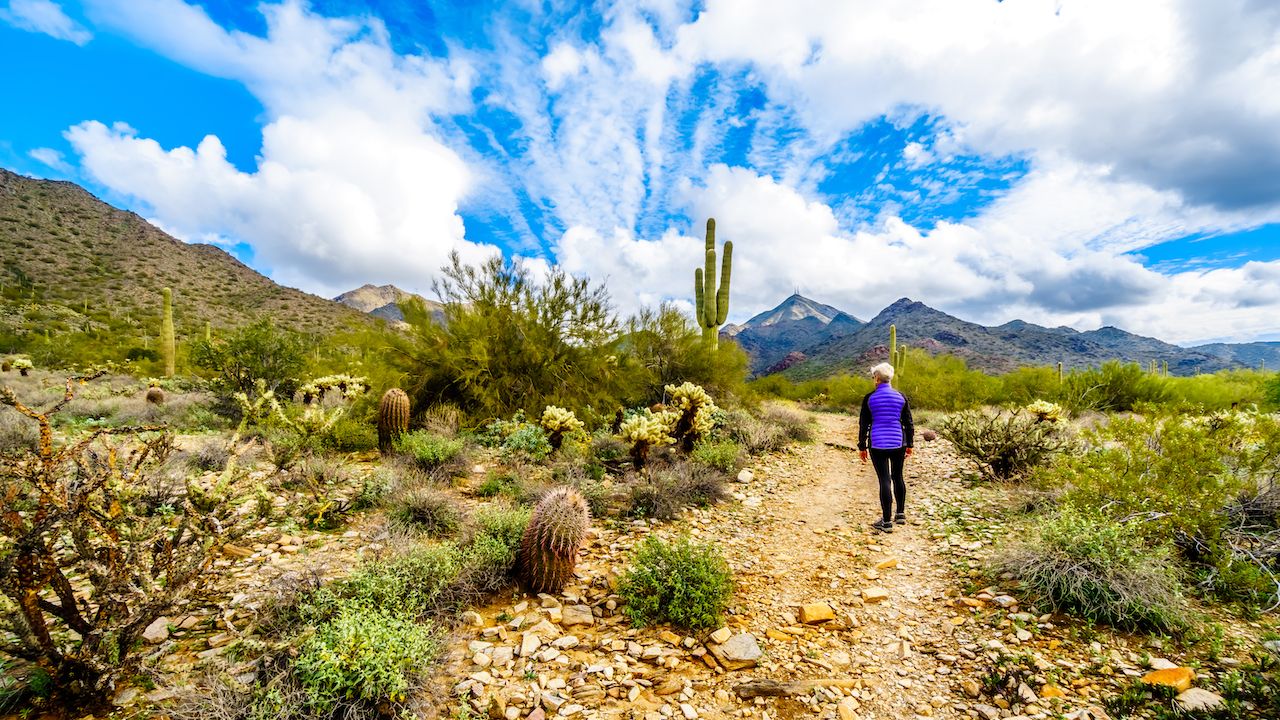
Photo: Harry Beugelink/Shutterstock
McDowell Sonoran Preserve — If you’re staying in Scottsdale, you’re close to one of the most expansive desert spaces in the greater Phoenix area. There’s more than 30,000 acres of protected land in the McDowell Sonoran Preserve, and the Gateway Trail is about a 20-minute drive from downtown Scottsdale. This area of the park is well-suited to all abilities; a wheelchair-accessible boardwalk winds through an impressive garden, low-impact trails allow hikers up-close views of giant saguaro cacti, and longer trails can take serious backpackers through the McDowell Mountain range. Arrive at sunrise for a mesmerizing view you won’t forget easily.